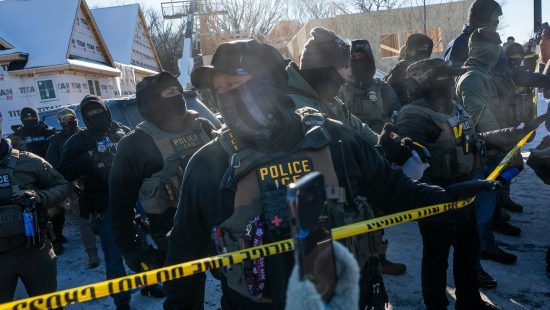“There’s nothing more gratifying than seeing that because of your work, a person has managed to get out of prison because they were wrongfully incarcerated.” Diana Teran Assistant District Attorney of Ethics & Integrity Operations
On any given day, you might hear stories like the following:
“Yair Oliva was shot to death as he stood in front of an apartment complex… two months later, a woman who had witnessed the shooting from a 200-foot distance identified Patterson as one of the shooters from a photo lineup.” However, another witness who was shown the same photo lineup did not identify Patterson. Also, no physical evidence was discovered that connected Patterson to the shooting.
A press release from the Los Angeles DA’s Office notes Patterson was “convicted by a jury of first-degree murder and sentenced to 50 years to life in prison.” Despite this, he has “continued to maintain his innocence from the time of his arrest.”
Nearly twenty years later, he was exonerated after a lengthy process led by The Innocence Center and the DA’s Conviction Integrity Unit (CIU).
Other similar cases have been brought to light in the media among the thirteen exonerations that the L.A. district attorney’s office, under George Gascon, has carried out during his administration.
“This administration has increased resources to investigate incarceration cases that request review. From three lawyers and two investigators previously, we now have nine lawyers and six investigators. We take these requests very seriously; we are aware that there are people in prison who may have been sentenced due to errors,” says Diana Teran, the Assistant D.A. in charge of the CIU.
Navigating the criminal justice system can be confusing for the community, especially without criminal backgrounds. It’s a learning process about the legal system that is learned step by step.
“In these times, we have more technology, more scientific instruments to review cases that are questioned. However, it’s not easy; there are many elements we must consider. On one hand, it’s the incarcerated individual, their family, on the other hand, the victim’s family, the elements of the police and sheriff involved in the case, and the new evidence presented. We have to be convinced that we are sure of an innocence, and we have to bring that before a judge, the case must be very solid,” adds Teran.
Recent reports have highlighted two cases, one of Franky Carrillo Jr., who was exonerated after 20 years. The other, that of Antonio Hernandez, who is incarcerated accused of murdering a person in Lynwood. In both cases, the police primarily relied on eyewitnesses, who can provide false testimony due to pressure from investigators or a simple mistake.
Misidentification of attackers is one of the most common causes of wrongful convictions.
“We bear all that in mind. There are cases from many years ago where there was no DNA evidence and other scientific instruments; it relied on eyewitnesses, and, it must be recognized, sometimes there was misconduct by the officers involved,” says Teran.
For Teran, having more resources, more elements, does not necessarily guarantee an expedited review process.
“It’s difficult to say the average time it takes for an investigation into these cases. It all depends on the evidence, the witnesses, the interviews with the people involved in the case. There are cases that can take ten days, like a recent one, up to two and a half to three years,” Teran adds.
According to the Assistant DA, the work of the CIU is not easy.
“No one likes to be investigated, especially in the police or sheriff’s department,” she says.
And then she adds, “It’s difficult to find elements willing to get involved with our unit. It takes a lot of heart and mindset.”
Currently, around 177 requests are being accepted for review. “The priorities of each depend on the evidence presented. Some move faster than others; some get stuck longer. It may be that witnesses have died, evidence has been lost, and we haven’t built a solid case,” she asserts.
Since 2015, this unit has received around 2,620 requests, and of those, nearly 1,700 were denied due to lack of elements.
“It’s easy to blame us because cases don’t progress or conclude, but we do what’s within our reach. Some simply fill out the application knowing that they don’t meet the requirements; others don’t have the proper paperwork. All of that delays us. Then, Covid came, and that had an impact on our work. We’re lucky to have Deputy District Attorney Martha Carrillo, fully bilingual, who reviews cases before starting a process. She’s excellent at communicating with people and is always there to clarify cases,” says Teran.
For Teran, the work of the CIU is fundamental, very important for the community.
“There’s nothing more gratifying than seeing that because of your work, a person has managed to get out of prison because they were wrongfully incarcerated. But at the same time, we feel sad knowing that a wrong process took away years of life in freedom. Not even the largest sum of money they can get will compensate for this blow. There are other cases that we know have a high likelihood of exoneration, but unfortunately, the evidence isn’t there; it’s been lost, people have died, and we can’t do anything,” she adds.
Teran recommends following the appropriate process to initiate the procedure to review a case of someone who is in prison.
“There’s a link on our website in Spanish and English. Start there. Gather the evidence and follow the process. You must be aware of the times. Just because you call every day doesn’t mean we’ll have an answer. We don’t have an exact timeline. And when there’s news, you’ll be notified,” she finally says.
For more information in English and Spanish, visit:
https://da.lacounty.gov/operations/ciu








